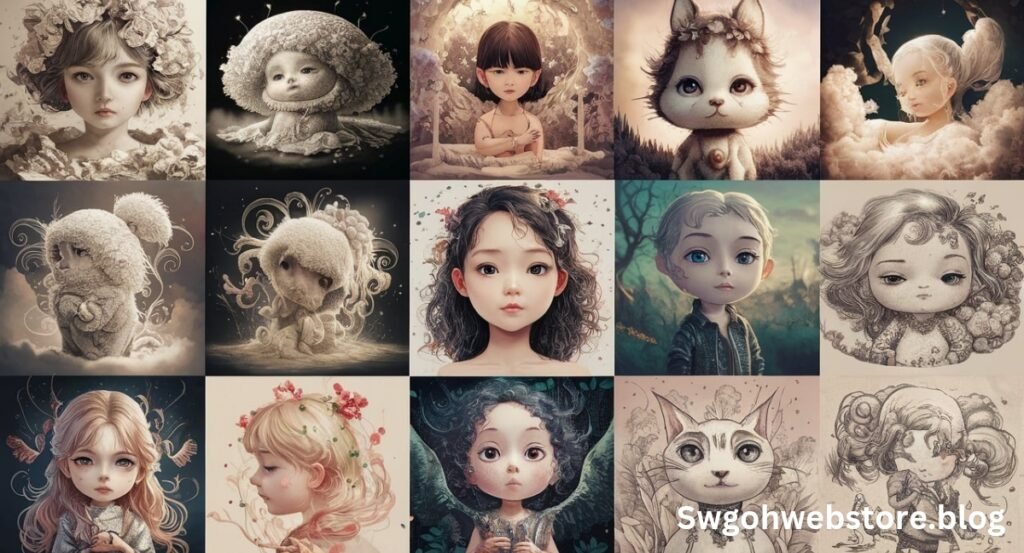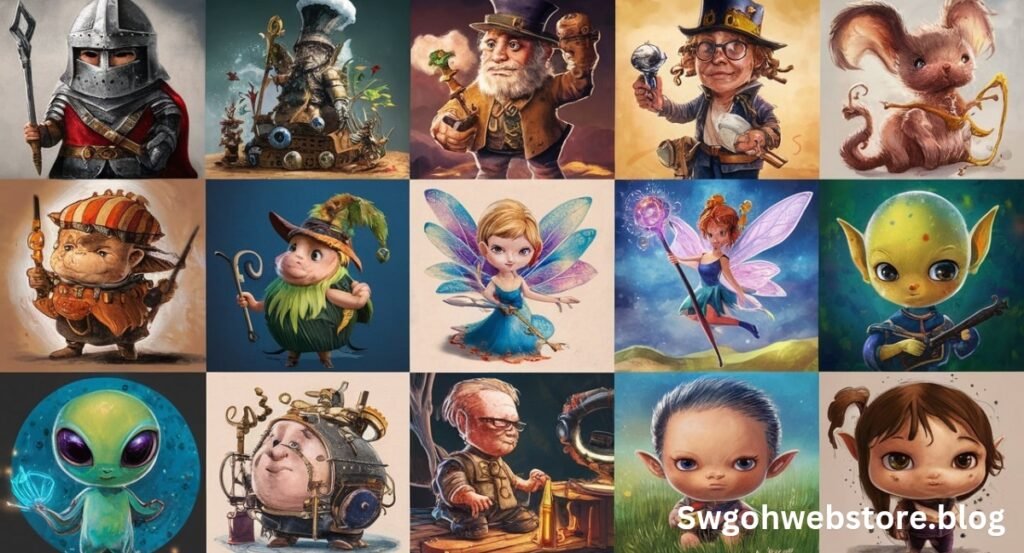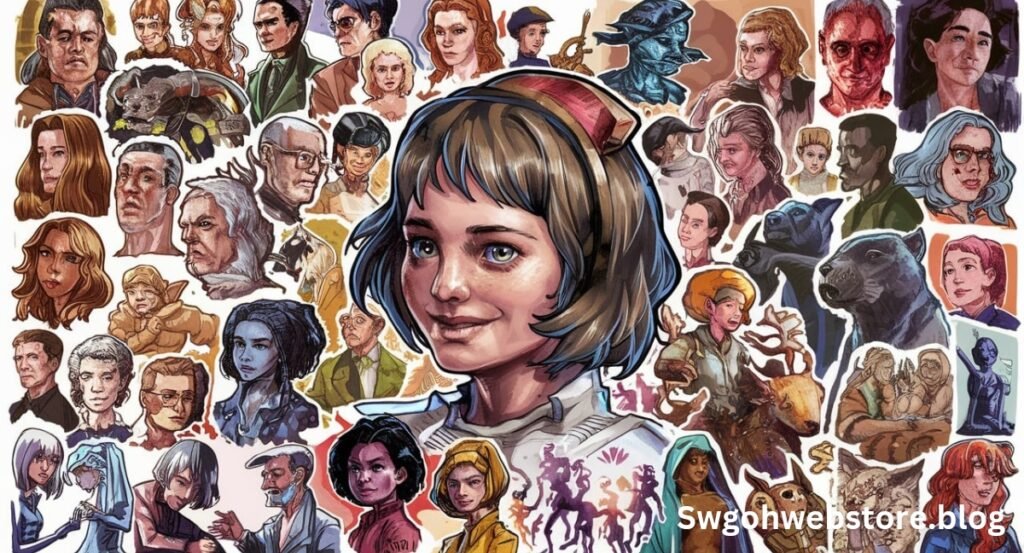Drawing is more than just a pastime; it’s a fantastic way to express your creativity and relax. Whether you’re a complete beginner or looking to improve your skills, “easy:7nbbaotekl8= drawings” can guide you through the basics. This approach simplifies drawing techniques, making it accessible and enjoyable for everyone.
“easy:7nbbaotekl8= drawings” focuses on straightforward methods to help you start your drawing journey with confidence. You’ll learn the essential techniques step-by-step, which will make the process less intimidating. With these easy methods, you’ll quickly see improvements in your drawing skills.
This guide is designed to provide clear and concise instructions. By following the “easy:7nbbaotekl8= drawings” method, you’ll build a strong foundation in drawing. The aim is to make learning fun and engaging, so you stay motivated to practice and improve.
Drawing can be a relaxing and rewarding hobby, and with “easy:7nbbaotekl8= drawings,” you’ll find it easier to pick up the basics. Start your creative journey today, and discover the joy of expressing yourself through art. With consistent practice, you’ll be amazed at how quickly your skills develop.
Materials You Need for easy:7nbbaotekl8= drawings

Before you start with easy:7nbbaotekl8= drawings, it’s important to gather the right materials. Basic drawing tools include pencils, erasers, paper, and a sharpener. For pencils, you’ll need an HB for sketching, a 2B for darker lines, and a 4B for shading.
Erasers are also essential for easy:7nbbaotekl8= drawings. A kneaded eraser is great for precision work, while a vinyl eraser is useful for erasing larger areas. Choose sketching paper or a sketchbook to practice your drawings. A good quality sharpener will keep your pencils ready for use.
Some brands are known for their quality and are recommended for easy:7nbbaotekl8= drawings. For pencils, consider Staedtler, Faber-Castell, or Derwent. Prismacolor and Staedtler make excellent erasers. For paper, Strathmore and Canson are reliable choices.
As you progress with easy:7nbbaotekl8= drawings, you might want to explore additional tools. Blending stumps can help with smooth shading, while charcoal offers richer, darker lines. Colored pencils can add a vibrant touch to your drawings, enhancing your artistic expression.
Getting Started with easy:7nbbaotekl8= drawings

Choosing the right subject is the first step in easy:7nbbaotekl8= drawings. Start with simple objects like fruits, vases, or basic shapes. Picking something you’re interested in will keep you motivated and make the drawing process enjoyable.
Setting up your workspace is crucial for easy:7nbbaotekl8= drawings. Ensure you have a comfortable, well-lit area to work in. A sturdy table and all your materials within reach will help you stay focused and organized.
Begin your easy:7nbbaotekl8= drawings with some basic warm-up exercises. Drawing lines, circles, and simple shapes can help you get accustomed to the movements and improve your hand-eye coordination. These exercises are essential for building a strong foundation.
Also Read: DISCOVER DRAWING:A4Z_-YMTKR8= CAT
As you get started with easy:7nbbaotekl8= drawings, remember that practice is key. The more you draw, the more confident you will become. Don’t worry about perfection; focus on enjoying the process and learning from each drawing session.
Understanding Lines and Shapes in easy:7nbbaotekl8= drawings
Lines are the foundation of easy:7nbbaotekl8= drawings. They define shapes, create textures, and form the basis of your artwork. Practicing drawing straight lines, curved lines, and zigzags will help you gain control and precision in your sketches.
Basic geometric shapes are the building blocks of easy:7nbbaotekl8= drawings. Start by mastering circles, squares, rectangles, and triangles. These shapes form the structure of more complex objects and are essential for developing your drawing skills.
In easy:7nbbaotekl8= drawings, combining simple shapes to form complex objects is a crucial technique. For example, a house can be drawn using rectangles and triangles. Breaking down objects into basic shapes makes them easier to draw and understand.
Understanding the importance of lines and shapes in easy:7nbbaotekl8= drawings will greatly enhance your ability to create accurate and detailed artworks. Regular practice with these basic elements will build a strong foundation for more advanced drawing techniques.
Shading Techniques for easy:7nbbaotekl8= drawings

Shading is an essential technique in easy:7nbbaotekl8= drawings that adds depth and realism to your work. Start with basic shading methods like hatching, which uses parallel lines, and cross-hatching, which involves overlapping lines. These techniques help create the illusion of light and shadow.
Understanding light and shadow is crucial for effective shading in easy:7nbbaotekl8= drawings. Identify the light source in your scene to determine which areas should be lighter and which should be darker. This awareness will help you create more realistic and dynamic drawings.
Creating gradients is another important skill in easy:7nbbaotekl8= drawings. Gradually increase the pressure on your pencil to transition from light to dark smoothly. Blending stumps or your fingers can be used to smooth out the shading, giving your drawings a polished look.
Practice different shading techniques to enhance your easy:7nbbaotekl8= drawings. Experiment with various methods to find what works best for you. Mastering shading will bring your drawings to life and add a professional touch to your artwork.
Perspective Drawing in easy:7nbbaotekl8= drawings
One-point perspective is a fundamental technique in easy:7nbbaotekl8= drawings. It involves all lines converging at a single point on the horizon. This method is useful for drawing roads, hallways, and other objects that appear to recede into the distance, creating a sense of depth.
Two-point perspective is another essential technique for easy:7nbbaotekl8= drawings. It uses two points on the horizon line, allowing for more complex structures like buildings and rooms. This method provides a more realistic depth and dimension to your drawings, making them more visually appealing.
Creating depth in your easy:7nbbaotekl8= drawings can also be achieved through overlapping, size variation, and placement on the page. Objects that are closer to the viewer should appear larger and more detailed, while those further away should be smaller and less detailed. This technique helps to create a convincing sense of space.
Practicing perspective drawing regularly will significantly improve your easy:7nbbaotekl8= drawings. Start with simple exercises and gradually move to more complex scenes. Understanding and applying perspective will enhance the realism and accuracy of your artwork, making it more engaging and lifelike.
Drawing Still Life in easy:7nbbaotekl8= drawings

Setting up a still life scene is an excellent way to practice easy:7nbbaotekl8= drawings. Arrange objects with varied shapes and heights, and ensure they overlap slightly to create depth. Use a simple light source to cast interesting shadows, which will add dimension to your drawing.
Careful observation is key in easy:7nbbaotekl8= drawings. Take your time to study the objects in your still life setup. Begin by sketching the basic shapes and focusing on the proportions. Paying attention to the negative space between objects can help maintain accuracy.
Adding details brings your easy:7nbbaotekl8= drawings to life. Once the basic shapes are in place, start refining your drawing with textures, shadows, and highlights. Observing how light interacts with different surfaces will help you depict them more realistically.
Also Read: ALIASSHARE.SHOP: REDEFINING ONLINE SHOPPING WITH CONVENIENCE
Practicing still life drawing regularly will improve your overall skills in easy:7nbbaotekl8= drawings. It enhances your ability to capture detail, understand light and shadow, and develop patience and focus. This practice will also boost your confidence in tackling more complex subjects in the future.
Figure Drawing for easy:7nbbaotekl8= drawings
Understanding basic human anatomy is crucial for figure drawing in easy:7nbbaotekl8= drawings. Start by studying the proportions of the human body, such as the head-to-body ratio. This knowledge will help you draw more accurate and lifelike figures.
Proportions and gestures are fundamental in easy:7nbbaotekl8= drawings. Practice drawing simple stick figures to get the proportions right. Then, move on to quick gesture sketches to capture the movement and posture of the body. These quick sketches help you understand how the body moves and interacts with space.
Drawing dynamic poses adds life to your easy:7nbbaotekl8= drawings. Observe how muscles stretch and contract in different positions and practice drawing figures in action. This will help you depict energy and movement, making your drawings more engaging.
Regular practice is essential for mastering figure drawing in easy:7nbbaotekl8= drawings. Start with simple poses and gradually try more complex ones. By continuously practicing and studying human anatomy, you’ll improve your ability to draw realistic and expressive figures.
Drawing Nature in easy:7nbbaotekl8= drawings

Drawing natural elements like trees, plants, animals, and landscapes is an enjoyable aspect of easy:7nbbaotekl8= drawings. Begin with trees and plants by sketching their basic shapes—trunks, branches, and leaves. Adding textures and details will enhance realism in your drawings.
When drawing animals in easy:7nbbaotekl8= drawings, break down their bodies into basic shapes. Focus on proportions and characteristic features such as fur texture or scale patterns. Observing animals in different poses and environments will help you capture their unique movements and expressions.
Landscape drawing in easy:7nbbaotekl8= drawings involves using perspective to depict realistic scenes. Start with the horizon line and place elements like trees, mountains, and water bodies accordingly. Understanding how to create depth and space in your landscapes will make your drawings more immersive.
Practice regularly with natural subjects in easy:7nbbaotekl8= drawings to improve your observation skills and drawing techniques. Experiment with different compositions and lighting conditions to add variety and interest to your artwork. Drawing nature offers endless possibilities for creativity and exploration in your artistic journey.
Digital Drawing in easy:7nbbaotekl8= drawings
Digital drawing opens up new possibilities for creativity in easy:7nbbaotekl8= drawings. To get started, you’ll need a graphics tablet and stylus, which mimic traditional drawing tools digitally. There are various software options available for digital drawing, such as Adobe Photoshop, Corel Painter, and free alternatives like Krita and GIMP.
Introduction to Digital Tools: Familiarize yourself with the tools available in digital drawing software. These tools include brushes, layers, and blending options, which allow for precise control over your artwork. Learning to navigate these tools is essential for creating digital drawings effectively.
Software Recommendations: Choose a digital drawing software that suits your needs and preferences. Adobe Photoshop is widely used and offers extensive features for digital artists. Corel Painter provides realistic brushes and textures, ideal for mimicking traditional art techniques. Free software like Krita and GIMP are excellent options for beginners looking to explore digital drawing without financial commitment.
Basic Digital Techniques: Start with basic techniques in digital drawing, such as creating layers to organize your artwork and using different brush sizes and opacity settings to add depth and detail. Experiment with digital blending techniques to achieve smooth transitions and realistic textures in your easy:7nbbaotekl8= drawings.
Digital drawing in easy:7nbbaotekl8= drawings offers advantages like undo options and the ability to work non-destructively. It also allows for easy experimentation with colors and effects. Whether you’re transitioning from traditional drawing or starting fresh with digital art, exploring these tools and techniques will enhance your creative abilities.
Common Mistakes and How to Avoid Them in easy:7nbbaotekl8= drawings

Avoiding common mistakes can significantly improve your easy:7nbbaotekl8= drawings. Here are some pitfalls to watch out for and tips on how to overcome them:
Overworking a Drawing: It’s easy to get caught up in details and overwork your drawing. Know when to stop and step back to assess if more work is needed or if it might detract from the overall piece.
Proportional Errors: Regularly check proportions by comparing different parts of your drawing. Use measuring techniques or reference points to ensure accuracy.
Ignoring Light Sources: Consider the direction and intensity of light sources in your scene. This affects shadows and highlights, crucial for creating depth and realism in your easy:7nbbaotekl8= drawings.
By being mindful of these common mistakes and actively working to improve, you’ll develop a more refined and polished approach to your easy:7nbbaotekl8= drawings. Consistent practice and learning from feedback will also play a crucial role in your artistic growth.
Tips for Continuous Improvement in easy:7nbbaotekl8= drawings
Continuous improvement is key to mastering easy:7nbbaotekl8= drawings. Here are some tips to help you refine your skills and enhance your artistic abilities:
Practice Regularly: Dedicate time each day to draw, even if it’s just for a few minutes. Consistency is essential for developing muscle memory and improving technique in easy:7nbbaotekl8= drawings.
Seek Feedback: Share your work with others and ask for constructive criticism. Feedback from peers or instructors can provide valuable insights and perspectives to help you identify areas for improvement.
Learn from Others: Study the work of artists you admire. Analyze their techniques, compositions, and use of light and shadow in easy:7nbbaotekl8= drawings. Incorporate elements that inspire you into your own artwork.
Also Read: Beautiful:by5oj2_qmci= Flowers: Blooms That Inspire
Experiment with Different Styles: Don’t be afraid to explore new techniques and styles in easy:7nbbaotekl8= drawings. Experimentation fosters creativity and allows you to discover what resonates with your artistic vision.
Develop Your Unique Voice: As you gain experience, you’ll naturally develop a personal style in easy:7nbbaotekl8= drawings. Embrace this evolution and allow your artwork to reflect your personality and artistic journey.
By integrating these tips into your practice routine, you’ll continuously grow as an artist and create more compelling and expressive easy:7nbbaotekl8= drawings over time. Remember, every drawing is an opportunity to learn and improve.
Incorporating Creativity in easy:7nbbaotekl8= drawings

Creativity is essential in easy:7nbbaotekl8= drawings to add uniqueness and personal expression to your artwork. Here are some tips to enhance your creative process:
Finding Inspiration: Draw inspiration from your surroundings, nature, books, movies, or other artworks. Keep a sketchbook handy to jot down ideas and sketches as they come to you.
Experimenting with Styles: Don’t be afraid to try different styles and techniques in easy:7nbbaotekl8= drawings. Experimentation allows you to discover new approaches and develop your artistic voice.
Developing Your Unique Style: As you practice and explore different techniques, you’ll naturally develop a style that feels authentic to you. Embrace this evolution and let your creativity guide your artistic journey.
Adding Personal Touches: Incorporate elements that are meaningful to you into your easy:7nbbaotekl8= drawings. Whether it’s a particular color palette, subject matter, or storytelling element, infusing personal touches makes your artwork more engaging.
Pushing Boundaries: Challenge yourself to step outside your comfort zone in easy:7nbbaotekl8= drawings. Take risks, explore unconventional ideas, and push the boundaries of traditional drawing techniques to unleash your creativity.
By nurturing creativity in easy:7nbbaotekl8= drawings, you’ll not only enjoy the artistic process but also create drawings that are meaningful and reflective of your unique perspective. Let your imagination soar and embrace the freedom to express yourself through your artwork.
Resources for Learning easy:7nbbaotekl8= drawings
Learning easy:7nbbaotekl8= drawings can be an enriching experience with the right resources. Here are some recommended sources to help you improve your skills:
Books and Online Courses: Many excellent books and online courses cover the fundamentals and advanced techniques of drawing. Look for resources that cater to beginners and offer step-by-step guidance.
Drawing Communities: Joining drawing communities online or in-person allows you to connect with fellow artists, share your work, and receive feedback. This collaborative environment fosters learning and inspiration.
YouTube Channels and Tutorials: Explore YouTube channels dedicated to drawing tutorials. Many artists share their techniques and tips through video lessons, making it easy to follow along and learn at your own pace.
Art Websites and Forums: Websites and forums focused on art and drawing often feature tutorials, articles, and discussions that can expand your knowledge and provide new insights into easy:7nbbaotekl8= drawings.
Local Art Classes and Workshops: Consider taking local art classes or workshops where you can receive hands-on instruction and guidance from experienced artists. These classes often provide valuable feedback and support for beginners.
Digital Resources: If you’re interested in digital drawing, explore software-specific tutorials and communities. Many digital art tools offer online resources and support to help you master digital drawing techniques.
By exploring these resources and integrating them into your practice routine, you’ll build a strong foundation in easy:7nbbaotekl8= drawings and continue to grow as an artist. Remember, learning is a continuous journey, so enjoy the process of discovering new techniques and refining your skills.
Conclusion
Embarking on the path of easy:7nbbaotekl8= drawings opens up a world of creativity and self-expression. Whether you’re just starting or looking to refine your skills, this artistic endeavor offers both enjoyment and personal growth. By mastering foundational techniques such as lines, shapes, shading, and perspective, you lay a solid groundwork for creating detailed and realistic artwork. Remember, practice is key; dedicating time to regular sketching sessions will sharpen your abilities and deepen your understanding of artistic principles.
As you progress in easy:7nbbaotekl8= drawings, don’t hesitate to explore different subjects and experiment with various styles. Finding inspiration in everyday objects, nature’s beauty, or even your imagination enriches your artistic vision. Incorporate personal touches and push the boundaries of traditional methods to develop a unique artistic voice. Embrace challenges and learn from mistakes, as they are integral to growth in any artistic pursuit.
Utilize available resources such as books, online courses, and community forums to continue learning and refining your techniques. Seek feedback from fellow artists and mentors to gain valuable insights and encouragement. Whether you prefer traditional pencil and paper or digital tools, each medium offers its own advantages for creating captivating artwork.
Above all, enjoy the process of creating easy:7nbbaotekl8= drawings. Celebrate each artwork as a reflection of your creativity and progress. With dedication, curiosity, and a willingness to learn, you’ll continue to evolve as an artist and discover new possibilities in the world of drawing.
Frequently asked questions (FAQs) about easy:7nbbaotekl8= drawings:
What are the best materials for beginners in easy:7nbbaotekl8= drawings?
Start with basic pencils (HB, 2B, 4B), a kneaded eraser, and sketching paper. These materials are affordable and effective for beginners to practice and develop their drawing skills.
How can I improve my drawing skills quickly?
Practice regularly and consistently. Focus on mastering fundamental techniques such as lines, shapes, shading, and perspective. Seek feedback from others and study the work of artists you admire to learn new techniques and approaches.
What should I draw as a beginner in easy:7nbbaotekl8= drawings?
Begin with simple subjects like fruits, basic shapes, or everyday objects. Starting with these subjects allows you to practice fundamental skills and gain confidence before moving on to more complex subjects.
Is digital drawing harder than traditional drawing in easy:7nbbaotekl8= drawings?
Digital drawing has its learning curve, but it offers advantages such as undo options, layers, and a variety of digital tools. Both traditional and digital drawing have their unique challenges and benefits, so it ultimately depends on your preference and goals.
How can I develop my unique drawing style in easy:7nbbaotekl8= drawings?
Experiment with different techniques, subjects, and styles. Over time, you’ll naturally develop a style that reflects your personality and artistic vision. Don’t be afraid to explore and incorporate elements that resonate with you into your artwork.
What are some tips for beginners in easy:7nbbaotekl8= drawings?
Start with learning basic techniques such as sketching, shading, and perspective. Practice regularly, observe the world around you, and seek inspiration from various sources. Don’t be discouraged by mistakes; they are part of the learning process.

Emily, an 8-year veteran, blends tech savvy with wanderlust. His fashion-forward perspective and business acumen create captivating content. Explore realms where innovation meets style.